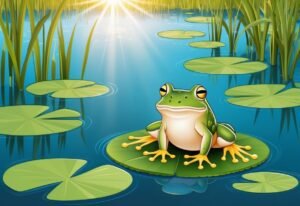What is Predator Prey Relationship: Nature’s Delicate Balance Explained

Predator-prey relationships are key interactions that shape ecosystems, affecting animal behavior and population dynamics through adaptations and complex food webs.

Predator-prey relationships are key interactions that shape ecosystems, affecting animal behavior and population dynamics through adaptations and complex food webs.

The myth of storks delivering babies comes from their role in ancient stories and folklore, symbolizing new life, family, and good luck.

Tiger salamanders are large, spot-patterned amphibians native to North America, known for their burrowing ability and habitat versatility, thriving in both wetlands and dry areas.

Red 40 is a synthetic food dye made from petroleum byproducts, used to add bright red color to various foods and beverages, and approved by the FDA.

Frogs, with their unique features and behaviors, encompass over 5,000 species, showcasing incredible diversity and adaptability across various habitats globally.

Omega-3 eggs are laid by hens fed a diet high in omega-3 fatty acids. They contain more omega-3s than regular eggs, offering potential health benefits.

High-speed rail in the USA has lagged behind Japan and Europe due to funding and infrastructure challenges, but new projects could finally bring faster trains.

Snails possess a radula, a unique tongue-like organ with thousands of tiny, strong teeth, facilitating their diverse diets and habitat adaptability.

Pick a Biology IA topic that interests you and fits the IB curriculum; ensure it allows for specific, measurable research questions and proper variable control.

Plankton are tiny organisms that drift in water, forming the base of marine food webs by providing food for various sea creatures, and play a crucial role in energy transfer and ecosystem health.